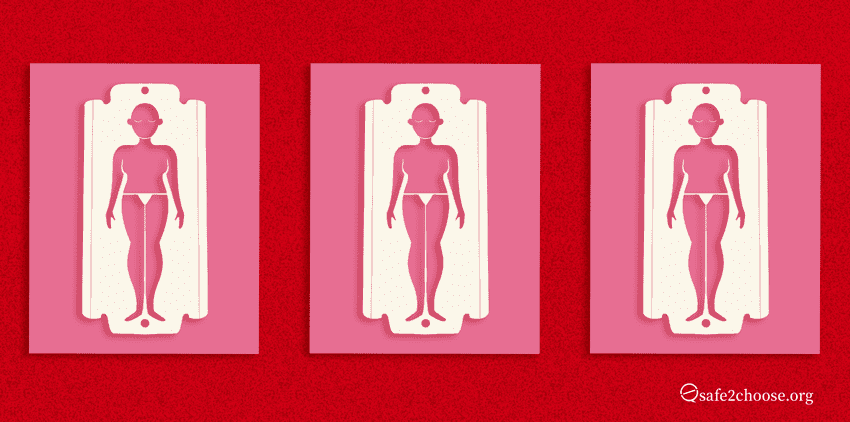- FGM, or female genital mutilation, is the partial or total removal of external female genitalia for nonmedical reasons. It is a violation of human rights and can lead to lifelong health complications, and yes, FGM can reduce or eliminate sexual pleasure due to nerve damage and psychological trauma.
In some parts of Asia and Africa, females are subjected to female genital mutilation (FGM) – a procedure involving partial or total removal of the external female genitalia for nonmedical reasons. The practice is rooted in cultural, religious, and social norms and is often motivated by perceived notions of cleanliness, modesty, and adherence to traditional rites of passage.
Growing up in Pakistan, where FGM is practiced in secret by some minority groups, I was not aware of it until my late teens. This secrecy around FGM makes it a largely invisible and, hence, ignored issue.
Given its impact on human well-being, it is important to end this silence. This blog aims to understand FGM and separate facts from myths.
As FGM is a biological process, this article will refer to girls, teens, women and people who are born with a vagina as “females.”
What Are the Different Types of Female Genital Mutilation (FGM)?
Internationally, FGM is recognized as a violation of females’ human rights. Among other health impacts, FGM has profound consequences for sexual pleasure and may lead to
- a loss of sensation,
- pain during intercourse, and
- difficulty in achieving orgasm.
The Four Types of FGM (World Health Organization (WHO) Classification):
- Clitoridectomy: partial or total removal of the clitoris.
- Excision: removal of the clitoris & labia minora.
- Infibulation: stitching of the labia after removing the clitoris and labia minora.
- Unclassified: Other harmful practices, including pricking, piercing, cutting, and burning.
How Does Female Genital Mutilation Affect Women’s Health?
Short-term side effects:
- acute pain,
- bleeding, and
- risk of infections due to unhygienic conditions during the procedure.
Long-term consequences:
- chronic pain;
- menstrual difficulties;
- sexual challenges, like pain during intercourse and reduced sexual pleasure;
- psychological trauma, such as anxiety and depression;
- risk of complications during childbirth, increasing the risk of tearing and the need for medical intervention; and
- recurrent infections and cysts.
Does FGM Affect Sexual Pleasure? Key Impact & Myths
FGM can have a significant and lasting impact on sexual pleasure; however, experiences can vary, and not every person who has undergone FGM will have the same outcomes. The impact on sexual pleasure depends on the type of FGM performed, individual variations, and the circumstances surrounding the practice.
Some of the ways FGM affects sexual pleasure are:
Sensation. The removal or alteration of genital tissue often results in a loss of sensitivity. The clitoris, a key organ for sexual pleasure, may be partially or completely removed, leading to diminished sexual arousal.
Intercourse. Scarring, tissue damage, and the absence of natural lubrication may contribute to discomfort, making sexual activity painful or traumatic.
Orgasm. People who have undergone FGM may find it challenging to achieve orgasm. The physiological changes can interfere with the normal sexual response cycle, making it difficult to experience sexual satisfaction.
Psychological impact. Anxiety, fear, and a negative body image may result from the trauma associated with the practice, which can contribute to difficulties in enjoying sexual activities.
Relationships. Painful intercourse and difficulties in sexual fulfillment may lead to relationship issues.
How Can We End Female Genital Mutilation? Solutions & Advocacy
Community Engagement
Given the sensitivity of the topic and its entanglement with religion and patriarchy, dialogue is needed from within communities.
Community leaders, religious authorities, and grassroots organizations have a role to play in challenging entrenched beliefs and raising awareness, as stressed by Kenyan FGM survivor and anti-FGM campaigner Sadia Hussein.
Education
. Schools, health-care providers, and community leaders can disseminate accurate information and foster a shift in attitudes towards FGM.
Legal Measures
Enforcing laws that explicitly criminalize the practice, along with penalties for those performing or promoting it, sends a strong message about the societal rejection of FGM. It is also important to draft laws in partnership with the community based on people’s lived realities rather than gendered and racialized stereotypes about them.

